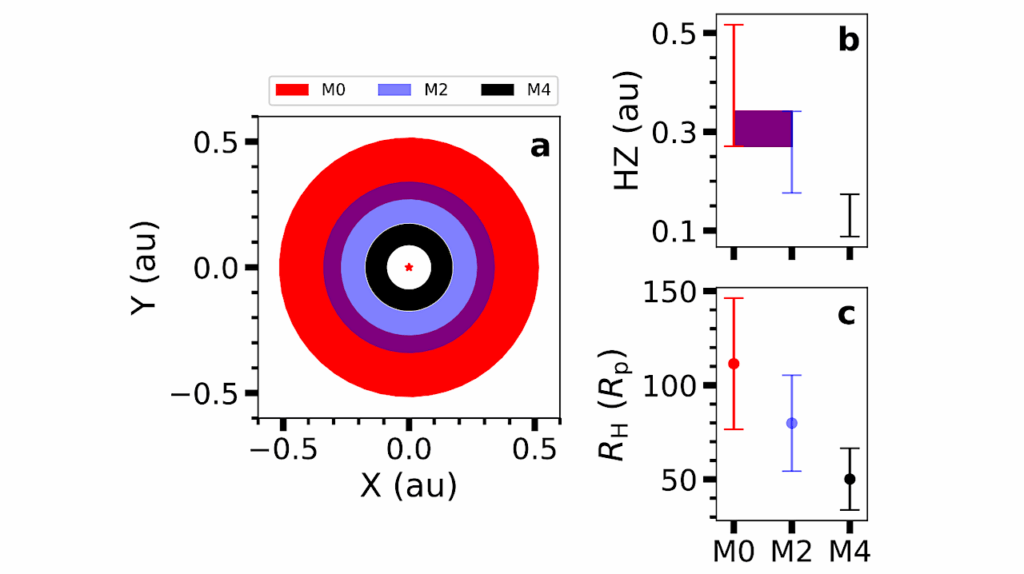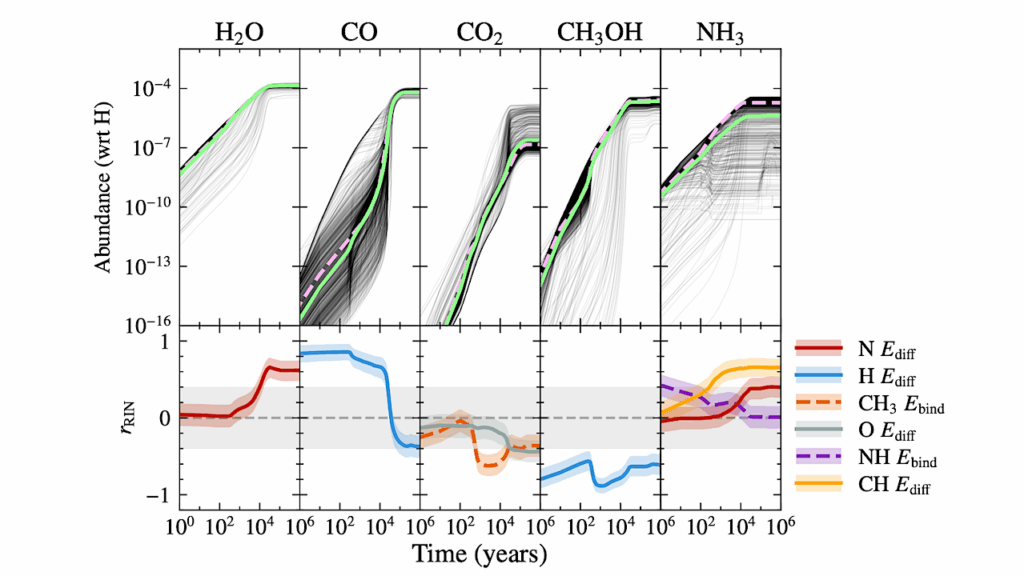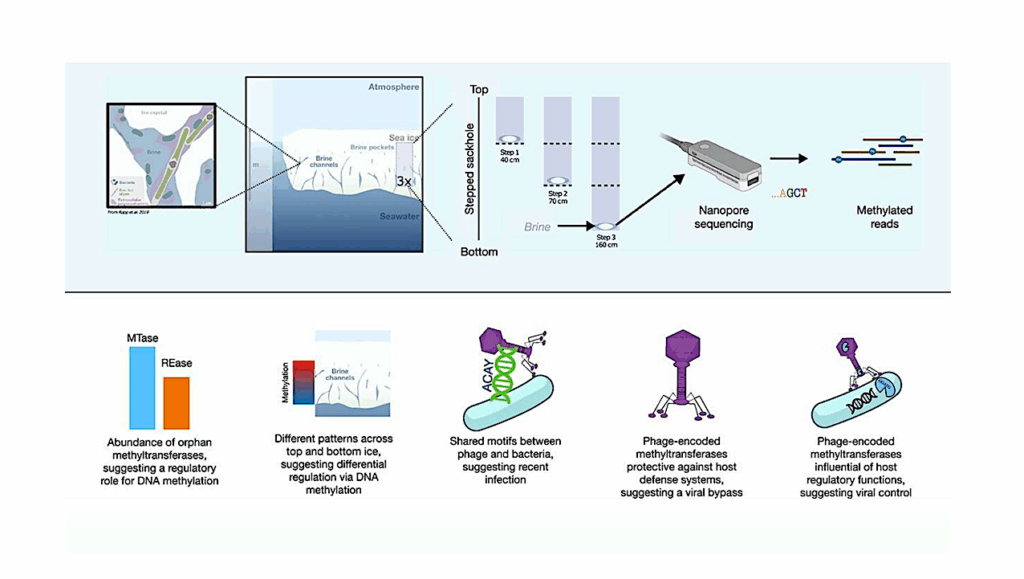Now Reading: Volatiles In Small Bodies
-
01
Volatiles In Small Bodies
Volatiles In Small Bodies
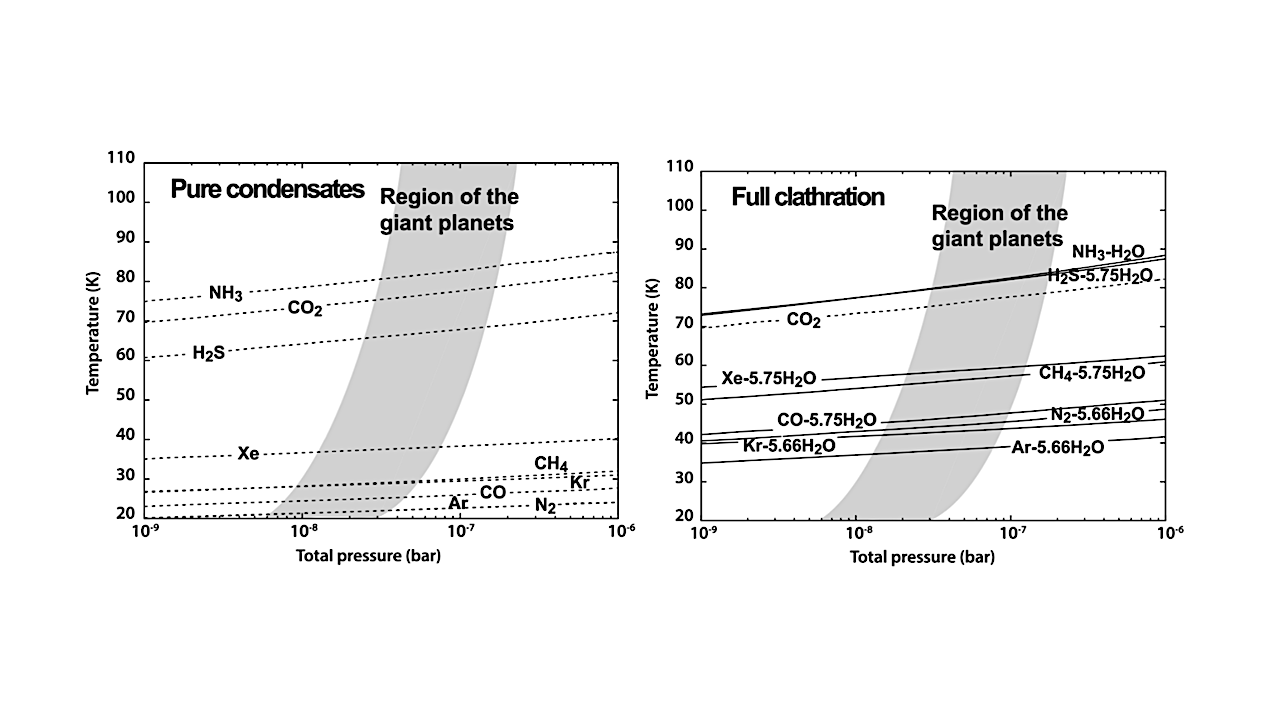
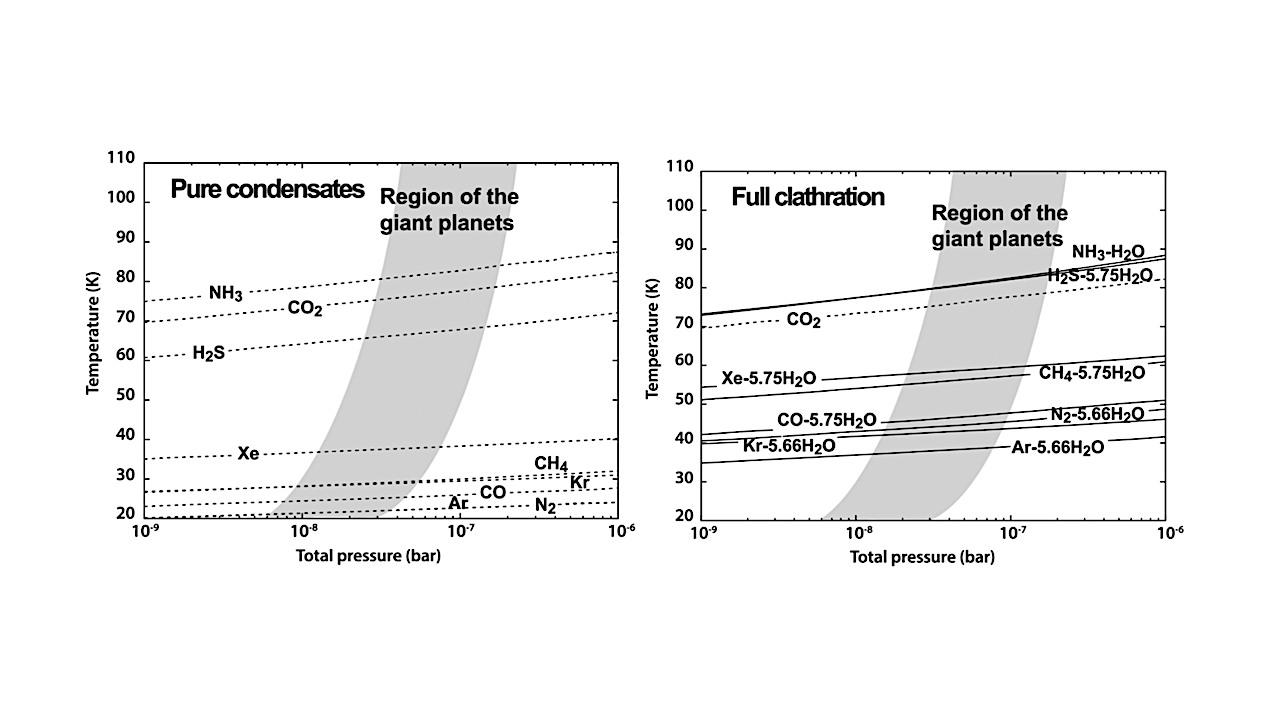
Condensation curves serve as a tool for prediction building block composition
as a function of conditions in the PSN. Here they are compared to the predicted cooling
curve of the PSN where the giant planets may have formed. (left) Equilibrium curves for
pure condensates (dashed lines) where species are in the gas phase above the curves.
(right) Scenario for clathrate formation including a combination of condensate, hydrate
(NH3–H2O), and clathrate formation (X–5.75H2Oor X–5.67H2O; solid lines), along with
crystallization of pure CO2 condensate (dotted line). (Mousis et al. 2020) reprinted with
permission © Springer. — astro-ph.EP
Small bodies are the remnant building blocks from the time when the planets formed and migrated to their current positions.
Their volatile composition and relative abundances serve as time capsules for the formation conditions in the protosolar nebula. By constraining the volatile composition of Centaurs, we can fill in important gaps in understanding the history of our solar system.
We review here the state of knowledge for volatiles in small bodies, processes that influence volatile composition and activity in small bodies, and future capabilities that can be leveraged to advance our understanding of volatiles in Centaurs.
Kathleen Mandt, Oleksandra Ivanova, Olga Harrington Pinto, Nathan X. Roth, Darryl Z. Seligman
Comments: Submitted version of excerpt (Chapter 6) from the book Centaurs. IOP Publishing Ltd. May 2025. this https URL
Subjects: Earth and Planetary Astrophysics (astro-ph.EP)
Cite as: arXiv:2507.13116 [astro-ph.EP] (or arXiv:2507.13116v1 [astro-ph.EP] for this version)
https://doi.org/10.48550/arXiv.2507.13116
Focus to learn more
Submission history
From: Darryl Seligman
[v1] Thu, 17 Jul 2025 13:32:16 UTC (2,537 KB)
https://arxiv.org/abs/2507.13116
Astrobiology, Astrochemistry,
Stay Informed With the Latest & Most Important News
-
 012024 in Review: Highlights from NASA in Silicon Valley
012024 in Review: Highlights from NASA in Silicon Valley -
 02Panasonic Leica Summilux DG 15mm f/1.7 ASPH review
02Panasonic Leica Summilux DG 15mm f/1.7 ASPH review -
 03How New NASA, India Earth Satellite NISAR Will See Earth
03How New NASA, India Earth Satellite NISAR Will See Earth -
 04And Thus Begins A New Year For Life On Earth
04And Thus Begins A New Year For Life On Earth -
 05Astronomy Activation Ambassadors: A New Era
05Astronomy Activation Ambassadors: A New Era -
06SpaceX launch surge helps set new global launch record in 2024
-
 07Space Force plans new ‘Futures Command’ amid pressure to speed up modernization
07Space Force plans new ‘Futures Command’ amid pressure to speed up modernization













